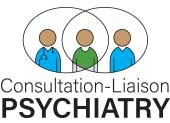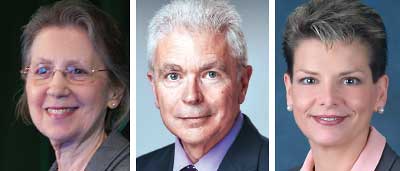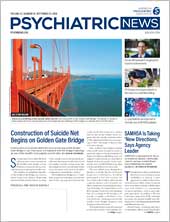HIV/AIDS psychiatry is a defined area of consultation-liaison (C-L) psychiatry that focuses on the prevention, care, and treatment of individuals with HIV or AIDS. This includes the psychiatric aspects of risk behaviors and antecedents; the psychiatric manifestations of HIV and its stigma; the psychological consequences of HIV and its multimorbidities; the impact on people who are infected and affected by HIV; and the need for a collaborative biopsychosociocultural approach to prevention, care, and adherence. The following cases illustrate the specific roles that HIV/AIDS psychiatrists can play in HIV prevention and care.
Mr. A, a 58-year-old married disabled man with multiple chronic systemic illnesses, including COPD, rheumatic heart disease, HCV, HIV, and opioid dependence in remission on agonist therapy, was referred for evaluation of depressive disorder with suicidal ideation after being diagnosed with HIV. Comprehensive care by his HIV/AIDS psychiatrist included psychodynamic psychotherapy, antidepressants, and close collaboration with his primary HIV clinician, other specialists, and nurse. Mr. A remained intermittently depressed and suicidal until he allowed family members to be involved in his therapy, after which he developed new goals and improved significantly.
Mr. B, a 30-year-old single man who was HIV negative, presented to the emergency room requesting postexposure prophylaxis (PEP) within 10 hours (well within the 72-hour window to prevent HIV transmission) following HIV exposure from an unprotected sexual encounter while intoxicated with alcohol. He was unable to obtain PEP until 77 hours after exposure. Ten days later, he developed an acute HIV infection and seroconversion sickness. Mr. B attempted suicide and was referred for care to an HIV/AIDS psychiatrist following a psychiatric admission. Mr. B had recurrent major depressive disorder exacerbated by distress, anger, and stigma associated with his HIV diagnosis. He responded well to crisis intervention, close follow-up, psychotherapy, and antidepressants and was adherent to HIV care and medication.
HIV is still an epidemic, with 1.1 million people in the United States living with HIV and 37,600 people becoming infected each year. Of U.S. residents living with HIV, 1 in 7 is unaware of having been infected and can unknowingly transmit the virus to others. Worldwide, 17 million orphans have been left behind by AIDS.
HIV/AIDS is a highly stigmatized, preventable illness caused by a virus and transmitted through human risk behaviors, for which psychiatric disorders can serve as both vectors of illness and obstacles to adherence. Psychiatric treatment can have a significant impact on morbidity and mortality and special implications for public health and general medical and mental health care, thus underscoring the role of C-L psychiatrists in HIV/AIDS care.
With the advances in HIV treatment, HIV has become a chronic, manageable illness for people with access to HIV medical care and treatment with antiretrovirals. However, if HIV medical care is unavailable or psychiatric illness impedes access to diagnosis and treatment, individuals with HIV are vulnerable to progression of illness, as was common in the early stages of the HIV epidemic. Therefore, C-L psychiatrists with HIV expertise can play an integral role in managing multimorbid psychiatric illness to mitigate disease progression and to improve access to care.
The central nervous system is an independent reservoir for HIV, increasing the risk for HIV-associated neurocognitive disorders and vulnerability to other opportunistic infections and cancers of the central nervous system, such as cryptococcal meningitis, toxoplasmosis, and lymphoma. HIV is also associated with multiple systemic medical illnesses, including hepatitis C, nephropathies, endocrinopathies, and neoplasms, as illustrated in the case vignette of Mr. A.
The HIV epidemic has a disproportionate impact on people of color and people who are LGBT, homeless, marginally housed, mentally ill, and/or economically disadvantaged. HIV is more prevalent in individuals with premorbid psychiatric illness, and psychiatric illness and suicidal ideation are prevalent following infection with HIV. Some antiretroviral medications, such as efavirenz, cause psychiatric side effects, while others, such as ritonavir, interact with psychotropic and other medications.
The HIV/AIDS epidemic magnifies mental health stigma and AIDSism (AIDS-associated stigma and discrimination) and decreases access to psychiatric care and HIV testing. Syndemics of trauma, addictive disorders, PTSD, and other psychiatric disorders complicate and perpetuate the epidemic and decrease adherence to HIV care. The psychiatric treatment of depressive disorders, PTSD, and addictive disorders can prevent suicide and improve adherence to both risk reduction and medical care. C-L psychiatrists need be aware of the drug-drug and drug-illness interactions that can further complicate treatment.
Co-located psychiatric and HIV care can help alleviate stigma, increase adherence to HIV medical appointments and treatment, decrease morbidity and mortality, and decrease HIV transmission through viral suppression. C-L psychiatrists with HIV/AIDS expertise can reinforce the concept that all psychiatrists can help prevent transmission of HIV by eliciting risk behaviors, encouraging routine HIV testing, suggesting early care engagement and antiretroviral treatment for viral suppression, and becoming aware of the availability of pre- and postexposure prophylaxis.
The HIV/AIDS epidemic magnifies health care disparities and the salience of social determinants of overall health. HIV/AIDS psychiatry broadens the scope of C-L psychiatry to include public health and preventive medicine. C-L psychiatrists with expertise in HIV/AIDS care are in a fortuitous position to teach the use of a collaborative approach to prevent HIV transmission, ameliorate the stigma associated with HIV and psychiatric illness, and care for people infected and affected with HIV. ■
The opinions and assertions expressed here-in are those of the authors and do not necessarily reflect the official policy or position of the Uni-formed Services University or the Department of Defense.


